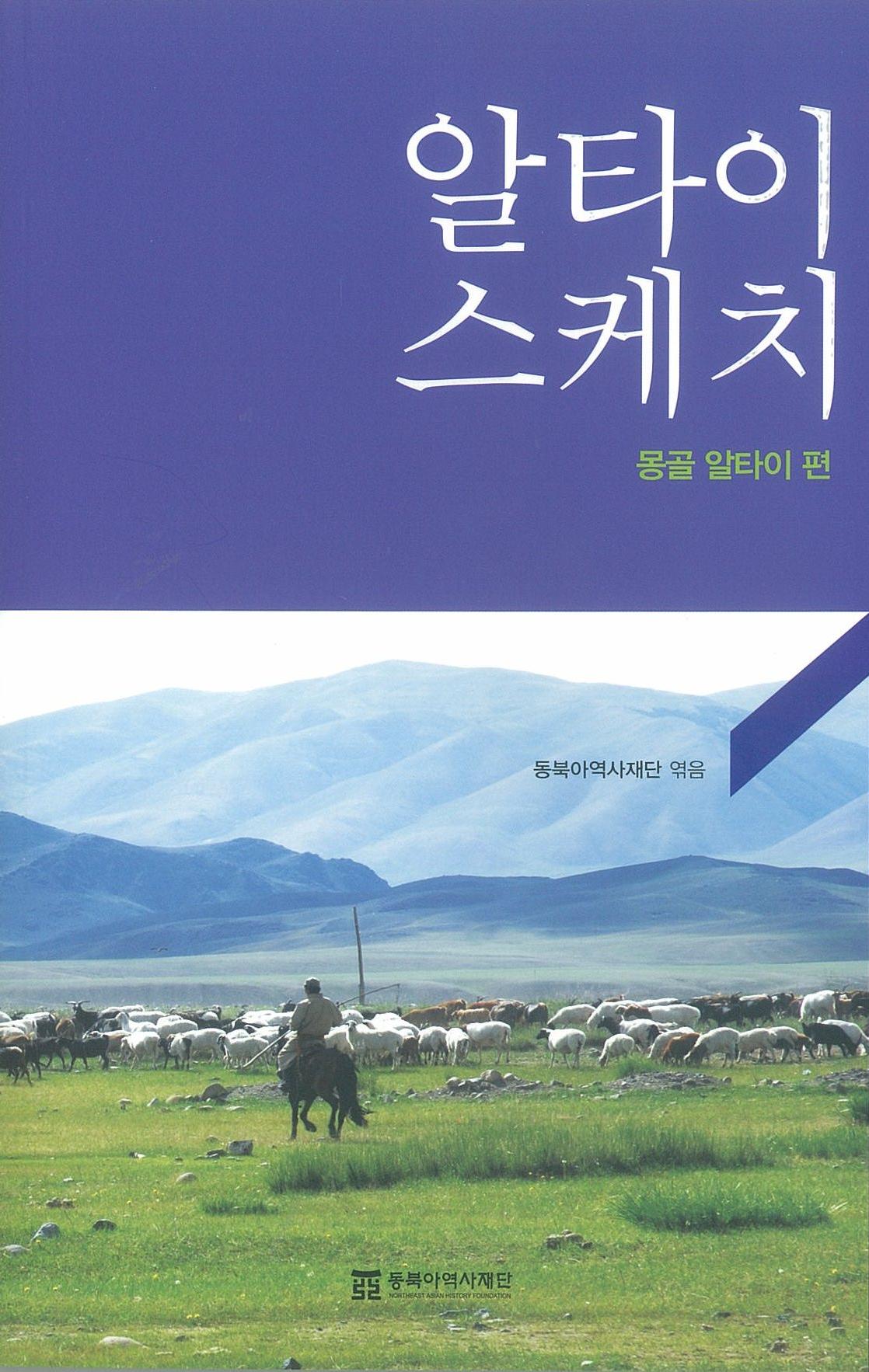Publication
- Date2015.03.25
- Hit890

1. All rights reserved by the Northeast Asian History Foundation
2. No part of the files on this website may be reproduced and/or copied in any way, shape, or form without permission.
Title: Altaic Sketch 1 – Mongolian Altai
Northeast Asian History Foundation | 225*152mm (A5 New) | 236 pages | December 31, 2013
ISBN 978-89-6187-325-3 94910
978-89-6187-326-0 (Set)
In the Manchu region, Tungusic peoples, such as Sushen (肅愼), Yilou (挹婁), Jurchen (女眞), and Manchu, established themselves early on and rose to power one after another. The kingdom Buyeo in ancient Korean history also based its growth on the Yemaek people living on the Songhua River basin. Jumong, who was originally from Buyeo, founded Koguryo in Hulsunggolseong (紇升骨城), presently in Jilin Province near Huanren County of Liaoning Province. This book talks about these different peoples, and their cultures and dispositions developed as they took turns to appear on this land, and the natural environment of Manchuria that inevitably gave rise to such cultures. This book offers a glimpse into the unique cultures of Manchuria, which are losing their original forms due to China’s unilateral projects, and the history of the rise and conflict of numerous peoples in the Manchuria region.
Contents
Introduction 4
1. Peoples around the Mongolian Altai Mountains _ A. Altansukh / Translated by YOON Eun-sook 20
The Kazakhs 24
The Tuvas 30
The Altai Uriankhai 35
2. Language and Religion of the Tribes around the Mongolian Altai Mountains_ V. Tuvshintugs / Translated by N. Mend 42
Altaic Language 43
Altaic People and Customs 47
Uriankhai and Buddhism 47
Uriankhai’s Archery and Branding 49
Epic and Singing in Duets 53
Folk Beliefs and Religion 57
The Kazakhs in Altai and Their Customs and Culture 61
3. Ethnography of the Bayan-Ölgii in Mongolian Altai_ JANG Joon-hee 68
Folklore of Nomads at Bayan-Ölgii Aimag 70
Everyday Life 70
Dietary Life 76
Housing Culture 83
Folk Beliefs 91
Festivals 98
Funeral Culture 101
Custom of Adopting the Eldest Grandson from the Eldest Son 105
4. Archaeological Sites and Relics in Mongolian Altai _ D. Tseveendorj / Translated by LEE Pyung-rae 116
Khirgisüür 118
Deer Stones 121
Type I: Deer Stones with Stylized Representations of Deer South of Lake Baikal 122
Type II: Deer Stones with Realistic Representations of Animals in the Sayan-Altai Region 125
Type III: Deer Stones without Animal Shapes of the Eurasian Continent 130
Old Tombs of Nomads Discovered in Permafrost at Olon-Güüriin-Gol of Mongolian Altai 138
Excavation and Investigation of Tomb No. 1 at Ulaan Davaa 139
Tomb No. 6 at Olon-Güüriin-Gol 147
Tomb No. 7 at Olon-Güüriin-Gol 155
Tomb No. 10 at Olon-Güüriin-Gol 156
5. Prehistoric and Ancient Art of Mongolian Altai/ JANG Seok-ho 178
World of Prehistoric and Ancient Art in Altai 181
Cave Paintings 181
Rock Paintings 183
Civilization Process in the Altaic Region 199
Advent of Domestic Animals 199
Advent and Change of Hunting Tools and Weapons 202
Advent and Change of Household Tools 205
Material and Style of Formative Art 210
Change in the Mode of Perception 213
Bibliography 220
Index 226
